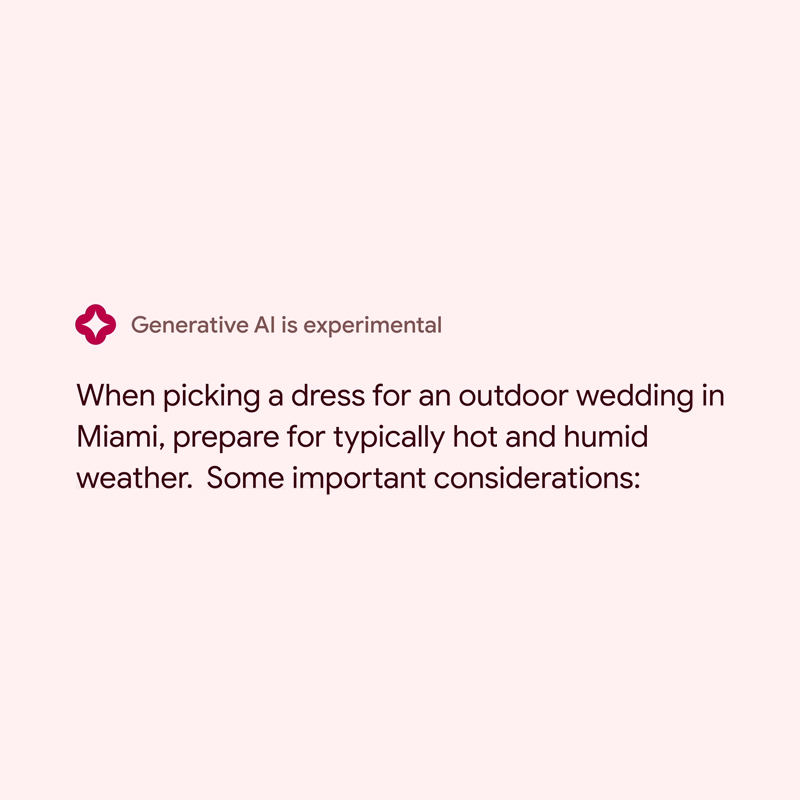
Like it or hate it, AI is the future of what's inside Google and beyond.
Thanks to the increasingly powerful hardware, cleverer algorithms and the abundance of training materials, tech companies have tons of resources at their disposal to create increasingly smarter AI products. And Google, the tech giant of the web, has been among the pioneers in the field.
But before, the AI field was rather quiet and dull.
Before OpenAI introduced ChatGPT, the field was mostly evolving, and revolving amongst fans and researchers.
But after OpenAI's massive adoption, others in the competition began to scramble, and Google is one of them.
After a botched introduction of Bard, which is Google's answer to ChatGPT, and after fixing the issue, Google updated the AI, and was ready to unleash it at full force.
Read: Google Finally Unleashed 'Bard', Its ChatGPT-Competitor, For The Public To Test
This comes after the world witnessed how OpenAI and Microsoft have been stealing most tech headlines with it comes to generative AIs.
Google is a company with tons of resources, and that it doesn't want to be trailed behind. It doesn't want to be left behind in the business dust.
This is why the company announced PaLM 2 at its I/O. Google has been working hard to develop this technology, and because of that, it promises over 25 products and features will be powered by the technology.
The language model consists of four different models, namely Gecko, Otter, Bison, and Unicorn.
After previously introducing PaLM to Bard, Google confirmed that the large-language model is open to everyone and that there is no more waiting list.
With PaLM 2, Google Bard is able to run tasks, like code generation, in over 20 code languages), debugging, and explaining code.
Read: Google Bard Receives The Ability To Generate And Debug Code: 'One Of The Top Requests'
With improved math, logic and reasoning skills, Bard can now help generate, explain and debug code in 20+ programming languages — and coding has quickly become one of the most popular things people are doing with Bard. #GoogleIO pic.twitter.com/Vcx5X6y0w7
— Google (@Google) May 10, 2023
But what's new here is that, the move is showing how Google is putting AI front and center, and that the search behemoth is showcasing it in Google Search.
In what's generally considered the most-valuable web page, and the most visited website on Earth, Google is experimenting with using large-language model in its search engine.
To demonstrate, Google showed how Google Search can return a result like usual, but with an additional box on top of the results.
The box in question, is actually rectangular, and colored in orange.
It pulses and glows, to attract users attention. And on it, it shows the phrase “Generative AI is experimental.”
Inside the box, Google Search returns an AI-generated summary, which comes in the form of paragraphs detailing answers to users' queries.
On the right, there are links to sites with information that corroborates what’s in the summary.
Google calls this the "AI snapshot."
Reid then clicked on an "bear claw" icon, which looks like a hamburger menu but a vertical line to its left, to open a new view. Here, the AI snapshot is split into different sentences, with links underneath to the sources of the information for that specific sentence.
"We want [the LLM], when it says something, to tell us as part of its goal: what are some sources to read more about that?" Reid said.
Just like its search engine results pages, Google's large-language model also gets its information from all over the general, open, surface web. The difference is the way the information is delivered and tailored.
Whereas Google Search's results are like lists of answers, the AI snapshot is more like recommendations from a personal assistant.
To get access to AI snapchats, users have to opt in to a feature Google calls the 'Search Generative Experience', or SGE for short. This feature is part of a feature Google calls the 'Search Labs'.
It's worth noting that not all queries can return answers from the AI.
Initially, at the moment of its introduction, SGE is still an experiment.
But the team at Google said it clear, that it's a foundational long-term change to the way people search.
This AI approach simply adds another layer of input that can help users ask better and richer questions, and receive better answers.
The AI is also designed to both answer users questions and guide them to new ones.
This change may seem minor, considering how massive Google is, and how popular its search engine already is.
But when it comes to its competition in the generative AI field with the likes of Microsoft, which has been on full throttle with its Bing AI chatbot, Google's SGE is Google's answer to Bing's AI.
Google Search is significantly larger than Bing, but Google Bard is not the future of Google Search. AI is.
AI can come in many forms, and SGE is Google's strategy to potentially shift the way billions of people find information online.